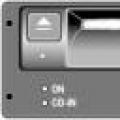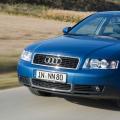
Another nuisance is that you have to carry a charger with you to the cigarette lighter. More precisely, several chargers: for your phone, GPS-receiver and your companion's phone (without communication, they fade). And travel experience suggests that you can't take much with you. Before you go over every thing you think you need it or not. This question is acutely faced before a trip for several days. Our Dear forum member Sergorus suggested an excellent idea, which has already been tested in practice and has proven itself excellent. The bottom line is to install a USB connector instead of a huge cigarette lighter.
Pros:
1) Practically does not take up space on the motorcycle tidy.
2) A large number of devices, including GPS and DVRs, are charged via USB cable. This means you don't need a separate device to get 5 volts from the cigarette lighter.
3) All chargers for mobile phones that I found in the office give out 5,7v / 800mA (Nokia, LG, Samsung). We cut the wire of your charging, solder the USB connector and use it. At home, all the charging is completely, and on the road only with a cord with a connector for your phone. The method is tested on Nokia.
4) Devices with USB charging (eg mp3 player) can now be taken with you.
5) For lovers of versatility, you can make one lanyard, where on one side is USB, and on the other there are many other connectors (for yourself and friends).
Minuses:
If you have an electric pump, then you will need to supply power for it separately. But, again, a plus - it does not have to be displayed on the dashboard of your motorcycle.
Now to the implementation. Thanks to Vadim for the illustrative diagram: 
Installed myself last summer. I never closed it. Although I drove in the rain and covered with snow. On my motorcycle it looks like this:
The circuit itself is installed behind the muzzle, where there is good cooling, but dirt does not fly from under the wheel. In this case, the radiator is bolted to the frame. 

And lastly, it is better to connect the circuit from the ignition switch in order to avoid a possible short circuit when the motorcycle is in the garage. And the battery will be livelier, because there is also consumption without load. If you need to charge your cell phone when the engine is off, just turn on the ignition, but don't start. Afraid to leave the key in the lock? Isn't it scary to leave a mobile on a motorcycle without supervision? So I thought that there was no need to permanently connect the circuit to the power supply, and in practice this was confirmed.
A motorcyclist, like any other user of numerous gadgets ( mobile phones, GPS navigators, tablets, etc.), you have to recharge your devices. It is rather difficult to predict in advance when the battery will be discharged (as a rule, this happens at the most inopportune moment). USB charger for motorcycle, which is small, convenient and easy (to install) electronic device, allows you to keep the battery of any mobile device in working order.
Varieties
Currently, for fans of "iron two-wheeled horses" offer wide choose chargers with USB socket:
- for installation in a standard cigarette lighter socket;
- with a fastening clip for fixing on the steering wheel fork;
- for insertion into plastic sheathing or dashboard;
- with the possibility of concealed installation in the most convenient place for the owner.
By functionality:
- with one or two USB sockets;
- with or without switch;
- with built-in voltmeter;
- with LED indicator for turning on the charging process;
- products "2 in 1" or "3 in 1" (charger + voltmeter + cigarette lighter).
And naturally, for those who love and know how to make useful devices with their own hands, it will not be difficult to make a charger on their own.
For motorcycles equipped with a cigarette lighter socket
For owners of motorcycles equipped with a standard cigarette lighter socket, it is most simple and rational to purchase a ready-made device specially designed for installation in this socket. A selection of such chargers from numerous Chinese manufacturers("Powstro", "Celbro" or "Raxfly") is quite varied. The price today is in the range from 200 to 350 rubles. The main criterion when choosing a charger installed in regular cigarette lighter motorcycle dimensions are. The device must be installed and removed from the socket without interference. The undoubted advantage of such products is the ease of installation (there is no need to drag through additional wires, connect to the motorcycle's electrical circuit and install an additional switch, since power is supplied to the cigarette lighter socket only when the ignition is turned on) and operation.
Universal devices for all types of motorcycles
Owners of bikes that do not have a cigarette lighter socket can purchase and install a charger on their motorcycle themselves. The wiring diagram is quite simple (you don't have to change the standard wiring):

According to the method of attachment, such USB chargers for motorcycles are produced in several versions. Simple and convenient way- mounting the charger on the steering wheel plug (for example, next to an already installed smartphone or navigator holder). Installation algorithm:
- we fix the device in a convenient place on the steering wheel fork;

- we lay the wires (along the standard wiring) to the battery compartment;
- we connect the wires to the battery terminals;
- we fix the laid wires with plastic clamps.
Such devices from "Cimiva", "Careslong" or "Feelwind" currently cost from 400 to 700 rubles.

For those who do not mind drilling a hole in the plastic casing of the "two-wheeled pet" or dashboard(if there is free space on it), you can safely purchase a charger made in the form of a cylinder with a large crimp fastening nut. Installing such devices is a little more difficult than the products described above:
- we find a place for installation;
- we apply markings (in the most convenient place, be sure to make sure that there is sufficient free space under it);
- remove the corresponding trim element or dashboard;
- in accordance with the markings, we drill a hole of the required diameter;
- we insert the charger into it;
- fix with a crimp nut;
- we mount the trim (or dashboard), with the charger installed, in place;
- we pull the wires, connect them to the battery and fix them with clamps to the standard wiring and metal elements of the motorcycle.
Such charging device from "Onever", "Iztoss" or "Eachgo" cost 300-500 rubles.

For hidden installation (in a place inaccessible to the eyes of "vandals"), universal devices with fastening for an existing technological screw or on double-sided tape are suitable. On a motorcycle, such devices can, for example, be installed under the driver's seat (however, it will be impossible to charge the gadget while driving) or under the gas tank.

Such chargers with a USB-socket for a motorcycle from "Konnwei", "Sikeo" or "Shunwei" today cost 450-550 rubles.

DIY USB charging
For the simplest (albeit quite "archaic" by modern standards) method self-made You will need a USB charger for a motorcycle:
- microcircuit - voltage stabilizer (for example, L7805 with input voltage from 7.5 to 35V, output voltage 5V, maximum load current up to 1A, overload and short circuit protection, costing 14-17 rubles);

- switch (price 30-40 rubles);
- part of the USB extension cable (with a female connector);

- heatsink for a microcircuit (for example, from a computer processor or video card);
- installation wires.
The connection diagram is quite simple even for a person who does not have deep knowledge of electronics:

Manufacturing process:
- we solder wires to the legs of the microcircuit, put on heat shrinkage at the places of the soldering, heat it with a hairdryer or a lighter;
- we fasten the microcircuit to the cooling radiator;
- solder the USB connector to the output wires;

- we fix it in a place convenient for use (with plastic ties-clamps or double-sided tape);
- we connect the positive wire to the "+" of the battery (in the gap we connect the block with the fuse and the switch);
- negative wires from the connector and the microcircuit are connected to "-" battery or body.
Instead of a microcircuit (with a sufficiently large heatsink), you can use a ready-made module with a switching voltage regulator and one or two USB connectors installed on the board. Such "semi-finished products" with an input voltage of 6 to 40V and an output voltage of 5V (maximum load current up to 3A) from Chinese manufacturers ("Flying Elephant", "FGhGF" or "Yufo-IC") now cost 80-150 rubles.

The overall dimensions of such modules are insignificant: length - 59-60 mm, width - 21-22, height - 14-17 mm. The body can be made, for example, from a piece of plastic pipe of a suitable diameter, a broken portable flashlight or an old electrolytic capacitor. It is only necessary to connect the wires, connect the fuse and the switch. A pair of metal straps can be used to attach to the handlebars of a motorcycle.

Criterias of choice
The choice of a specific charger model depends a lot on the brand of motorcycle. For example, if there is enough free space on the dashboard, then you can purchase a flush-mounted model. In this case, it is better to match the color of the operating mode indicator to the tone of the backlighting of the main instruments (speedometer, tachometer, and so on). And the design of the device should not violate the overall aesthetic picture. Fortunately, the wide range of products available for sale makes it easy to do this.
Models of chargers, designed for hidden installation or with a handlebar mount, are suitable for almost any brand of motorcycle. Here you should pay attention to the required number of simultaneously connected mobile devices and the presence / absence of a built-in voltmeter.
Since the motorcycle is operated under a wide variety of weather conditions, a prerequisite for any additional equipment(charging is no exception) is increased protection from moisture and dust.

And the last (and for some, very important) selection criterion is the external design. On the steering wheel, of course, products in a chrome case will look "cooler" than ordinary plastic boxes and cylinders. However, the price for them will be much higher.
Studying in the off-season different goodies for motorcycles, I realized that charging for my phone / camera is vital for me!)
Therefore, following the path of selection, purchase, assembly and installation, I decided to write a small instruction on how to install USB charging on any motorcycle.
There is nothing complicated about it. I will give the simplest option, which, nevertheless, is not devoid of the necessary elements.
Who is interested, read on!
Electrical diagram simple enough. No need to gnaw at the standard wiring, install various additional relyushki, etc. It is applicable not only for USB, but also for ordinary 12V cigarette lighter.
Everyone should make the choice of USB-connector or 12V-cigarette lighter for themselves. Note that the factory USB board converts the voltage from 12V to 5V. Therefore, additional lotions in the circuit are not required. Plus there are combo 12V + USB connectors.

For those who are very far from circuitry, I will explain.)
The battery is shown below. From it there are two wires for USB. The wires go through a fuse, a power button and a voltmeter. All of these elements are optional, but highly desirable.
- The fuse will protect against emergency electrical currents.
- The voltmeter will protect against complete battery discharge.
- The button will protect you from discharging the battery and from those who want to recharge in your absence).
Principle of operation:
1. The circuit is turned off.
2. Pressing the button turns on the voltmeter and USB connector.
3. When pressed again, the circuit is turned off again. There is no voltage at the connector. The voltmeter is off.
A fuse is usually already included in a good kit for your cigarette lighter or USB port.
For example, my kit included a fuse, USB port lights, and hardware.
But there are also more budget options for those who are not afraid to modify. Fuses are sold at every corner.

Remember the main thing! The connector must be Waterproof.
I bought a voltmeter on ebay, but there are no problems with them in our retail either. Look for Waterproof Voltmeter.
Almost any button will do. It is better, of course, to choose a waterproof one. There are backlit ones, but this will complicate the scheme a little.
Having collected all the necessary items. Let's start assembling.
In addition to the electrical elements themselves, you will need:
1. Insulating tape (heat shrink) / clamps. See the length of the clamps immediately on your frame. I first took a whole package of short> _<
2. A screwdriver, possibly a drill, a wide drill and other tools (if you decide to cut into the plastic).
ps I said that the article is for dummies;)
3. Motorcycle and beer.
Now there are a lot of pictures for each stage with explanations.
Fuse 7.5A. Why 7.5A I don't know. So the Chinese decided.
Full face, profile.


Putting together the circuit.



Checking from the battery (taken from the drill).

There is a contact! The voltmeter shows the voltage at the push of a button.
Button isolation.
General form.

The button is embedded after the fuse on the positive cable. Voltmeter according to the diagram to positive and negative.
Black, by default, is minus.
Hero of the occasion.
We lay out the tool, remove the plastic (to hide the cable).

How to remove the plastic, read the manual for the bike. As a rule, everything is simple. Most hemorrhoids with rivets.
Having removed the seat, we see the battery.

We fasten minus to minus, plus to plus.

I hid a voltmeter with a button, combined with electrical tape into a single block in the trunk. You can't get in without a key.
We fasten with clamps.

We stretch the cable along the frame and fix it with clamps.
In the photo, the cable is on the right, but then moved to the left side. It's more comfortable on my mote.
My version is good in that without using the connector, the battery is not discharged (and even more so, no one else can use the charger). Plus, it can be easily dismantled, if not cut into plastic. Steering wheel or plastic, 12V or USB - it's up to you!
Thank you for your attention. I am ready to answer questions. =)




